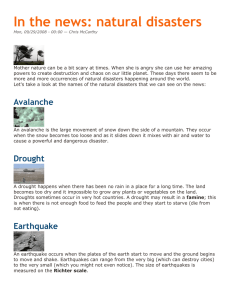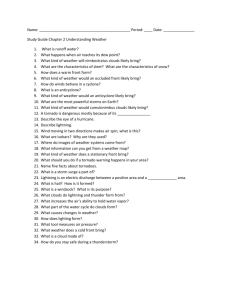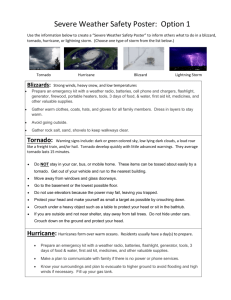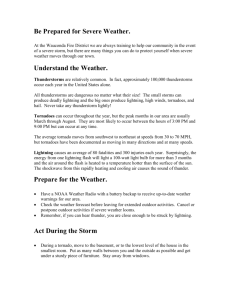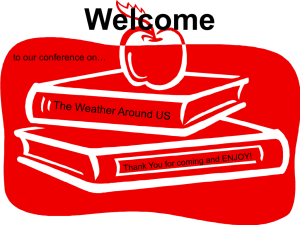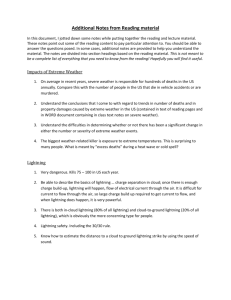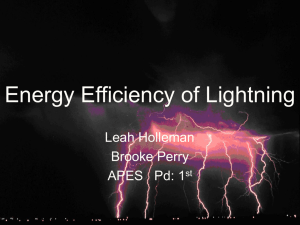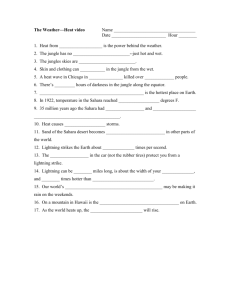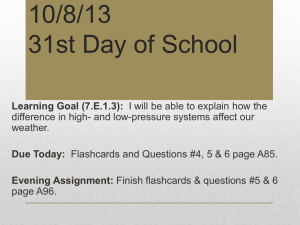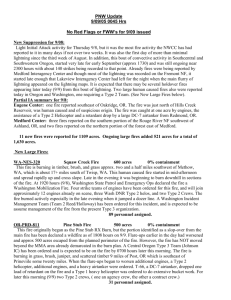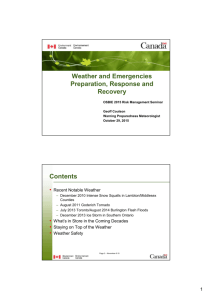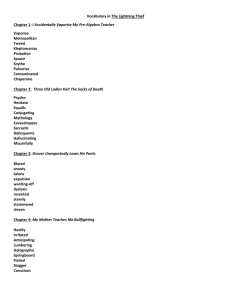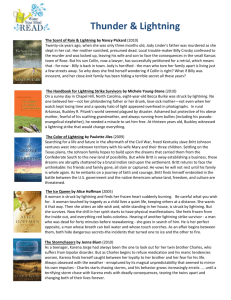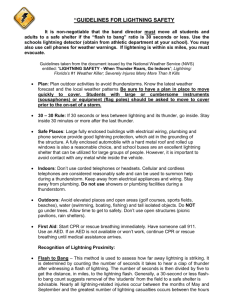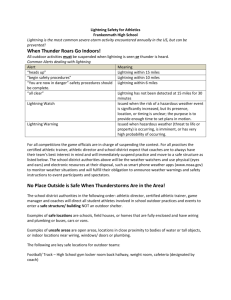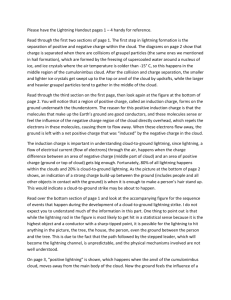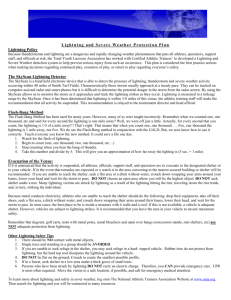Mother nature can be a bit scary at times. When she is angry
advertisement
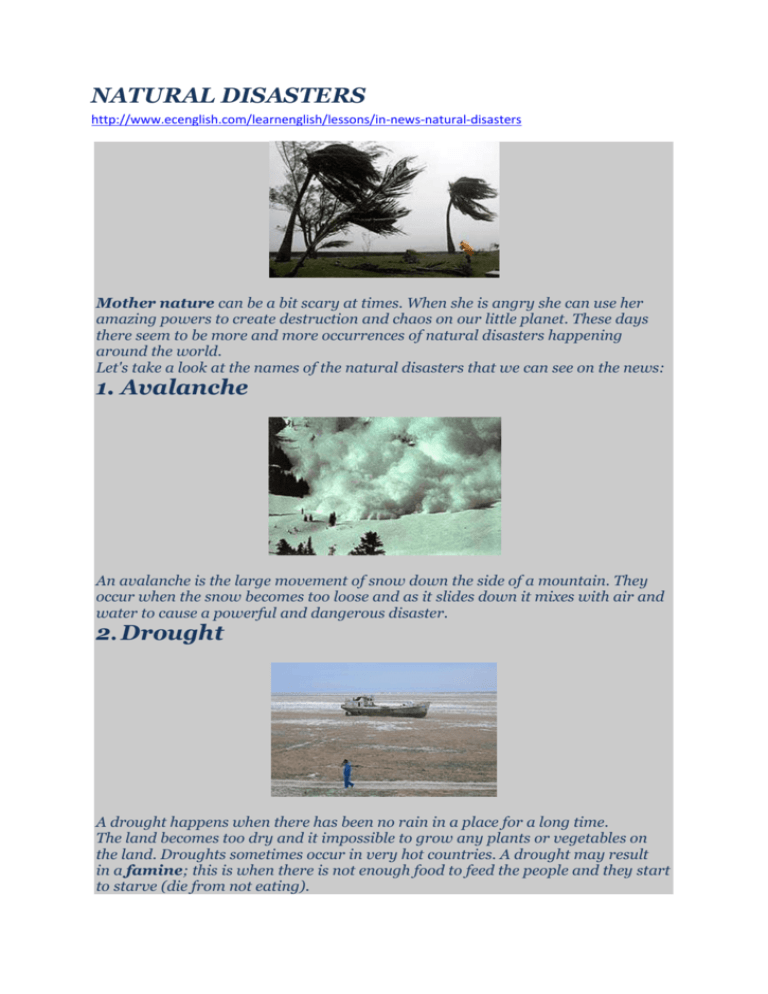
NATURAL DISASTERS http://www.ecenglish.com/learnenglish/lessons/in-news-natural-disasters Mother nature can be a bit scary at times. When she is angry she can use her amazing powers to create destruction and chaos on our little planet. These days there seem to be more and more occurrences of natural disasters happening around the world. Let's take a look at the names of the natural disasters that we can see on the news: 1. Avalanche An avalanche is the large movement of snow down the side of a mountain. They occur when the snow becomes too loose and as it slides down it mixes with air and water to cause a powerful and dangerous disaster. 2. Drought A drought happens when there has been no rain in a place for a long time. The land becomes too dry and it impossible to grow any plants or vegetables on the land. Droughts sometimes occur in very hot countries. A drought may result in a famine; this is when there is not enough food to feed the people and they start to starve (die from not eating). 3. Earthquake An earthquake occurs when the plates of the earth start to move and the ground begins to move and shake. Earthquakes can range from the very big (which can destroy cities) to the very small (which you might not even notice). The size of earthquakes is measured on the Richter scale. 4. Flood A flood occurs when a large amount of water covers the land. Too much rain usually causes floods. Floods also happen when the water level in a river becomes too high. As sea levels continue to rise, the risk of flooding increases. 5. Forest fire / Wildfire Usually during a hot, dry summer forest fires occur. They may be started by people or by lightning in storms. These huge fires spread easily because of wind and the dry conditions. California has a forest fire season when the risk of fires is high. 6. Hurricane / Typhoon A hurricane, which originally means 'big wind', is most likely to occur in late summer in America. They are caused by low air pressure and thunderstorms and result in strong winds and heavy rain. When they happen in the Atlantic Ocean we call them hurricanes; however, they are called Typhoons when they happen in the Pacific Ocean. 7. Landslide A landslide happens on a slope like a mountain or a hill. The rocks and earth become loose and fall down the slope. When soil on the slope is wet, a mudslide may occur. 8. Lightning Lightning occurs when electricity comes down from the sky and hits the ground. A lightning strike can typically be 30,000 °C and travel at 60,000 miles per second. Thunder is the loud sound that we hear soon after a flash of lightning. 9. Tornado A tornado, which is casually known as a twister, is a very large column of wind that spins around very quickly. Tornadoes happen in most places around the world, but are most common in America. The power of a Tornado can cause the winds to destroy houses and pick up and throw heavy items. 10. Volcanic eruptions When a volcano erupts it sends hot red lava flowing from its top. Lava is a type of liquid rock that when cools turns back into rock. Lava is Magma which comes from below the crust of the earth. Eruptions are caused by the plates of the earth moving and the pressure makes magma push up through the cracks in the earth.

